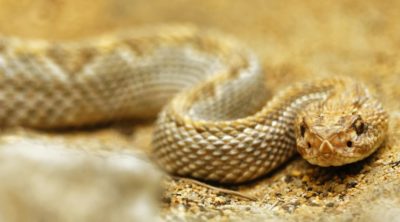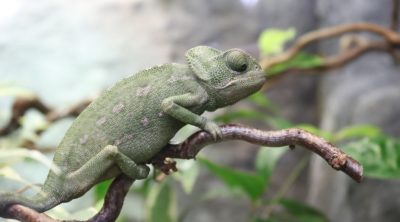
Here’s a short guide to bearded dragon behavior, which will help you interpret the behavior of this lizard species in captivity. A must read if you are not able to figure out why your pet bearded dragon acts weird at times – or if you intend to keep this lizard species as a pet.
The term ‘bearded dragon’ is basically an umbrella term for the seven species of lizards belonging to genus Pogona, native to the arid and semi-arid regions of the Australian mainland. The lizards belonging to this genus, the Central Bearded Dragon (Pogona vitticeps) and the Western Bearded Dragon (Pogona minor) in particular, are quite popular as pets. On an average, these lizards can grow on to attain a length of somewhere around 13-24 inches.
At the same time, the peculiar physical features (such as the spiny scales arranged in rows and clusters) and the range of colors that they come in also add to their appearance. Other than the size and appearance of bearded dragons, their gentle behavior and the fact that they are easy to care for, make them quite popular among people who like to keep exotic pets.
Understanding the Bearded Dragon Behavior
Keeping a bearded dragon as a pet is no doubt a good idea, but you need to be well-versed with its behavior and characteristic traits if you are to make sure that you don’t compromise on its care. As in case of any other member of kingdom Animalia, even this lizard tends to display some behavioral traits; decoding which can help you make sure that you don’t compromise on your pet bearded dragon care.
Discussed below are the details of bearded dragon behavior which you need to be well-versed with if you own one, or if you are contemplating the idea of owning one.
- The bearded dragon is a diurnal species i.e., it is active throughout the day and sleeps at night just like humans, which means you don’t have to give up on your sleep to feed your pet lizard at odd hours at night; something which you will have to do quite often if you keep some nocturnal species as a pet.
- The bearded dragon is an omnivorous species i.e., it feeds on both plants and animals. Usually, its diet is made up of flowers, fruits and other plant matter as well as insects and species of lizards, snakes and mammals, which are smaller than it.
- Yet another oft-seen gesture in bearded dragons, head-bobbing is done as an act of submission or dominance. While fast head-bobbing symbolizes dominance, slow head-bobbing by females signals submission to males. At the same time, males are known to bob their head in a violent manner just before mating.
- While head-bobbing shows dominance, the hand-waving gesture that this species often resorts to is an act of submission when it comes to rivalry between two adult males. The female bearded dragons though, will wave their hand and follow it by slow head-bobbing to show that she is ready to mate.
- When threatened, the bearded dragon expands the spiny scales around its neck, which makes it look bigger and fierce, as a defense adaptation to scare off its predator. The fact that this expanded portion of their body looks like a beard earns this species the name bearded dragon. At times, they also expand these scales as a part of mating ritual to attract females.
- As in case of chameleons, even bearded dragons change color in response to temperature change in the surroundings and other stimuli. At times, you will see the bearded dragon curling its tail towards its body, which is a sign of alertness in this species.
One of the most amazing bearded dragon adaptations is the ability of this species to adapt to different environment with relative ease. That explains why bearded dragons, native to the arid and semi-arid regions of the Australian mainland, are found in captivity all over the world today.
Such is the popularity of this species, that it is specifically bred for the purpose of adoption. That being said, you need to be careful when buying a bearded dragon (or any other species of reptile for that matter) from a pet store, as they are known to carry several infections on their body.
To make sure that you don’t end up buying a bearded dragon suffering from some zoonotic disease, you will have to buy it from a reputed breeder and keep a close watch for its behavior. The key to choosing a healthy individual is to make sure that you choose the one which is quite active and alert, as a lizard with health issues is bound to be quite dull.


